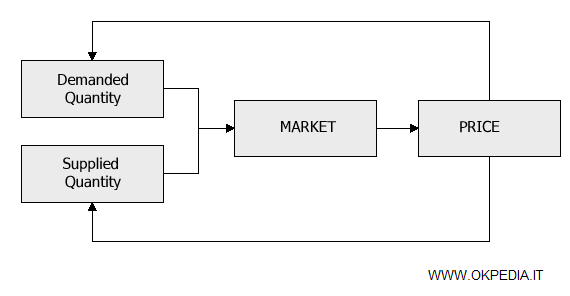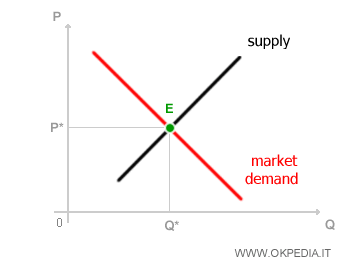Market
The market is the system that governs the exchange of goods and services. It can take the form of a physical venue or a virtual space where buyers (demand) and sellers (supply) come together to negotiate and transact. In short, it is the mechanism through which economic exchanges occur.
Each economic good operates within its own market, where its supply meets its demand.
How the market operates
The market shapes several key economic variables:
- Price. The market equilibrium price - the price at which supply and demand for a particular good or service are perfectly balanced.
- Quantity. The actual volume of the good or service exchanged when the market reaches equilibrium. At this point, the quantity supplied exactly matches the quantity demanded.
- Quantity supplied. The volume of the good or service that sellers are willing and able to offer.
- Quantity demanded. The volume of the good or service that buyers are willing and able to purchase.
In capitalist economies, it is the market that coordinates the decisions of producers and consumers. It sets prices, determines quantities sold, and allocates resources efficiently among an endless array of possible uses.

How market prices are determined
In a free market, economic agents interact directly with one another, without the involvement of intermediaries.
The market price emerges at the point where the decisions of sellers (supply) intersect with those of buyers (demand).

The equilibrium price is the price at which the quantity supplied exactly equals the quantity demanded for a given good or service.
This state is known as market equilibrium (E).
Adam Smith’s Invisible Hand. The workings of the market were eloquently described in the early days of political economy through Adam Smith’s concept of the "invisible hand." This term refers to the market forces that, without central direction, naturally steer the economy toward a state of equilibrium that benefits all participants.
Market structures and types
The main market structures or forms include the following:
- Market competition. In a competitive market, numerous firms supply similar or equivalent goods and services in an effort to satisfy the same demand.
- Perfect competition. In a perfectly competitive market, no individual economic agent has the power to influence the market’s equilibrium. Both supply and demand are fragmented into an infinite number of small participants.
- Oligopoly. An oligopolistic market is dominated by a small number of large firms on the supply side of a particular good or service.
- Monopoly. In a monopolistic market, a single firm supplies a specific good or service, and no close substitutes are available to meet the same demand.
- Monopolistic competition. A market characterized by monopolistic (or imperfect) competition occupies an intermediate position between monopoly and perfect competition.
The dynamics between supply and demand are strongly shaped by the market structure.
Market equilibrium varies depending on the specific form of the market.
